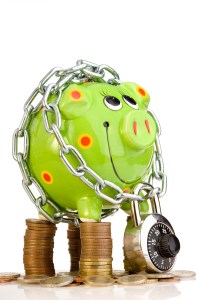 The pandemic has been credited for skyrocketing digital transformation, and contactless payments are certainly high on that list. Overnight, digital payments were favoured over cash transactions, prompting us to start using contactless bank cards, virtual cards, and wearables.
The pandemic has been credited for skyrocketing digital transformation, and contactless payments are certainly high on that list. Overnight, digital payments were favoured over cash transactions, prompting us to start using contactless bank cards, virtual cards, and wearables.
There are many ways to pay for goods and services, or send and receive money. These include Tap to Pay, Scan to Pay, transactional bank accounts and more recently, super apps. Here’s a quick breakdown of how they differ.
Using a digital wallet
A digital wallet is meant to replace a physical wallet through your smartphone. It stores multiple bank cards and loyalty cards and is protected with a PIN or biometrics. Apple Pay and Samsung Pay are great examples of this, but it’s a pity Google Pay has not launched in this space yet.
Both apps store your cards in a secure manner. When payment takes place, it uses a token instead of your card number. This is an extra layer of protection when compared to physical wallets as merchants don’t have access to your card number anymore, thus it cannot be used fraudulently afterward. Virtual cards work similarly and are much safer.
Using a wearable
A fitness tracker offers more flexibility without being tied to a mobile operating system, like Garmin Pay or Fitbit Pay. These third-party offerings pair on iOS and Android and support the majority of our local banks. It brings the convenience of paying by simply tapping your wrist without having to take out a physical wallet.
Wearables work in the same secure manner as Samsung Pay and Apple Pay, and require cards to be added separately to your phone. This includes the Apple Watch 6, Apple Watch SE, Galaxy Watch4, Galaxy Watch Active2, and other supported models.
Scanning a QR Code
There definitely isn’t a shortage of mobile payment apps available. These apps work differently from mobile wallets, as they require you to add your banking digits as they appear on your card, including expiry dates and CVV. To pay, all you need to do is scan a QR code and enter your password to complete the payment.
Examples of Scan to Pay apps are SnapScan, Zapper, MasterPass, FNB, Standard Bank and Absa. These payment methods are popular at restaurants, coffee shops, markets, pop-ups, small businesses, and during lockdown, among retailers like Dis-Chem.
Send and receive money
Transactional, no-fee bank accounts are slowly gaining popularity among South Africans, including the ‘unbanked’ population, millennials, Gen Z, and parents. It lets you pay your domestic worker, send money to your kids at school or pay a friend, among other additional services.
Options to consider that are both low-cost or free, include the likes of Spot Money, Tyme Bank, eWallet Extra, and Telkom’s own Telkom Pay digital wallet that runs on Whatsapp.
Enter the super app
Super apps like Nedbank by Avo and Vodacom’s VodaPay are excellent choices for smartphones that have limited space available on the device. It allows you to pay for multiple services using a single login for airtime, bills, groceries, online shopping and transfers – all from one interface. You can use it on a prepaid basis or link a card.
When it comes to mobile payments, you don’t have to limit yourself to one app or ecosystem. Just find what suits your lifestyle and make sure security is tight. Using a virtual card is always more secure than a physical card as it doesn’t need to be replaced. Should your info get compromised, you simply delete the card and generate another one.
Cache This
 Technology is an ever increasing part of our lives and let’s be honest, many of us like gadgets. There is also an abundance of new online services and apps taking over the traditional services we use. Nafisa Akabor has been covering everything tech for well over a decade and she’ll be writing on how we can do tech within a budget and reviewing some of the new online services. Cache This is published on the last Tuesday of every month.
Technology is an ever increasing part of our lives and let’s be honest, many of us like gadgets. There is also an abundance of new online services and apps taking over the traditional services we use. Nafisa Akabor has been covering everything tech for well over a decade and she’ll be writing on how we can do tech within a budget and reviewing some of the new online services. Cache This is published on the last Tuesday of every month.
